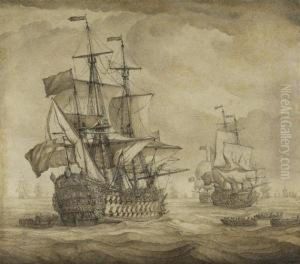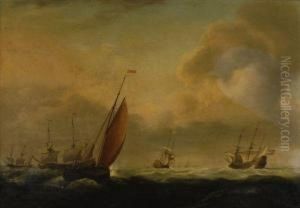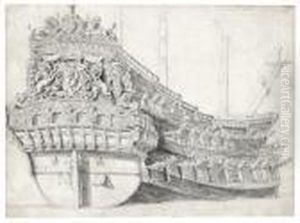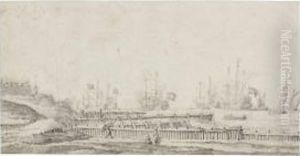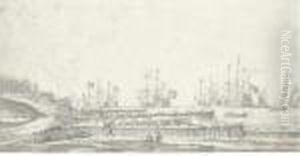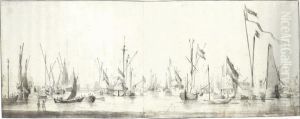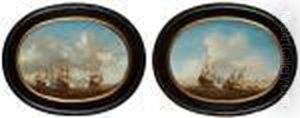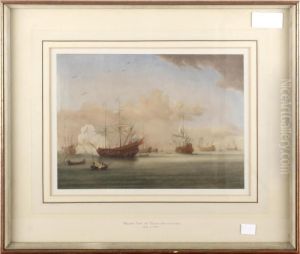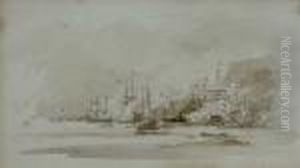Willem I Van De Velde Paintings
Willem van de Velde the Elder was a distinguished Dutch painter and draughtsman, renowned for his mastery in marine art. Born in 1611 in Leiden, Netherlands, into a family deeply involved in art and maritime trade, van de Velde developed a keen interest in the sea and ships from an early age. His early life was marked by the turbulent times of the Eighty Years' War, which influenced his choice of subjects, focusing predominantly on naval battles, marine landscapes, and detailed studies of ships. Despite the scarcity of documented details about his early training, it is believed that his father, who was a sailor, and his maritime environment profoundly influenced his artistic development.
Willem van de Velde the Elder's work is characterized by its precise detail, accurate representation of maritime subjects, and subtle use of light and atmosphere. He started his career in Amsterdam, where he quickly gained fame for his drawings and paintings that captured the essence of the sea. His reputation as a leading maritime artist of his time grew, attracting commissions from the Dutch navy and merchant fleet. In the 1650s, amidst political and economic shifts in the Netherlands, van de Velde expanded his repertoire to include calm seascapes and ship portraits, which showcased his exceptional skill in depicting water and light.
In 1672, due to the outbreak of the Franco-Dutch War and the decline of the Dutch art market, van de Velde moved to England, accompanied by his son, Willem van de Velde the Younger, who was also a talented marine artist. In England, they were granted royal patronage by King Charles II, who was an admirer of van de Velde's work. This patronage allowed Willem the Elder to continue his work in relative financial security, documenting naval battles and producing exquisite drawings for the English royal court. He established a studio in London, where he and his son worked together, creating detailed and accurate renditions of naval engagements and peaceful maritime scenes.
Willem van de Velde the Elder passed away in London in 1693, leaving behind a legacy that had a profound impact on marine painting. His meticulous attention to detail and his ability to capture the spirit of the sea set a standard that influenced generations of maritime artists. His works are preserved in major museums around the world, testament to his enduring significance in the history of art.
